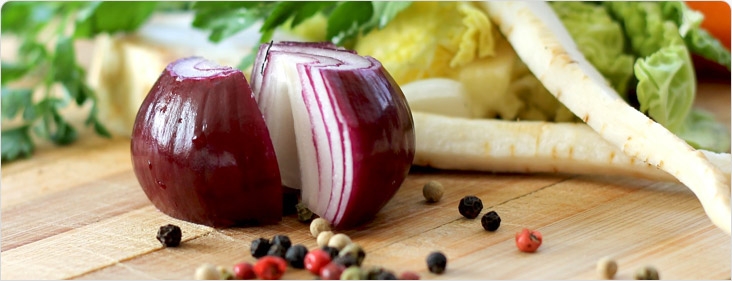
All About Vegetables
Eating vegetables is a low-calorie way to get essential vitamins into your everyday diet—with plenty of additional health benefits
EAT VEGETABLES. BE HEALTHY. LOSE WEIGHT.
Vegetables are tasty and a great source of vitamins A, C, and folate. In addition, vegetables contain important minerals, including iron and magnesium. They are also an excellent source of complex carbohydrates and are low in dietary fat. This is good news for people trying to lose weight.
Vegetables provide important vitamins and nutrients for a healthy body. Eating vegetables has many health benefits, such as lowering your risk for some types of cancer, type 2 diabetes, stroke, and heart disease. A diet that includes vegetables rich in potassium, like leafy green vegetables, may also lower the risk of kidney stones and help prevent bone loss as you get older. Finally, vegetables can be a low-calorie way to fill yourself up.
RECOMMENDED AMOUNTS
Women are recommended to eat 2 to 2½ cups of vegetables each day; men are recommended to eat 2½ to 3 cups daily.
Try to eat a variety of vegetables. For example, try to eat vegetables from each of these groups:
- Dark green vegetables like broccoli, spinach, kale, collard greens, and romaine lettuce
- Red and orange vegetables like carrots, butternut squash, tomatoes, and sweet potatoes
- Beans and peas like black beans, black-eyed peas, chickpeas, kidney beans, pinto beans, soy beans, and lentils
- Starchy vegetables like corn, green peas, and potatoes
- Other vegetables like artichokes, asparagus, green beans, mushrooms, zucchini, and eggplant
You can buy your vegetables fresh, frozen, canned, or dried/dehydrated. You can serve them raw or cooked, whole, cut-up, or mashed—see what your healthcare provider recommends, and enjoy!
SERVING TIPS FOR VEGETABLES
With a little creativity and planning, vegetables can become a fun and enjoyable part of your everyday diet. Here are some serving tips that you may find helpful:
- Fresh vegetables are great snacks; celery, carrots, cauliflower, green peppers, cucumbers, and broccoli can be good choices
- Steaming vegetables can be fun and can add variety to your meals. Best of all, it is easy to do and does not leave a big mess. While steaming the vegetables, you can add herbs or other seasonings for more flavor or serve the steamed vegetables with a splash of lemon
- Think of different ways to add vegetables to the foods you already enjoy. Adding a slice of tomato, 2 large leaves of lettuce or spinach, and a pickle on the side can turn a sandwich into a meal that includes one serving of vegetables. You can also mix mushrooms into a marinara sauce, fill your omelet with spinach, or add chopped celery or radish to tuna salad
- If you eat fast food, be creative. Some fast-food restaurants now offer vegetable options instead of French fries, so you can try a garden salad or baked potato next time—but be careful with dressings and toppings. Make sure they are low fat and remember to watch out for those hidden calories
